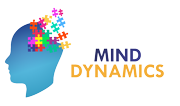Dr. Harold Cummins, MD (born:1893; died:1976), was recognized as “Father of Dermatoglyphics” worldwide. In 1926, Dr. Cummins coined the term “Dermatoglyphics.” His lifetime work of the scientific study of skin ridge patterns found on humans’ hands and the techniques he developed are known as Cummins Methodology. This methodology has gained common usage in diagnosing some types of mental retardation, schizophrenia, Down syndrome, cleft palate, and even heart diseases.
Later in 1950, a Canadian neurosurgeon, Professor Penfield, published a “Cross-sectional diagram of a brain in relation with various parts of the body,” which indicates a close relationship between fingerprints and cerebrum. Former USSR was using Dermatoglyphics as one method to select Olympics Games candidates since the 1970s. As it turned out, the USSR took home 50 gold medals in 1972 and 125 in 1976.
Dermatoglyphics, derived from ancient Greek words “derma” meaning skin and “glyph” meaning carving, The scientific study of patterns on skins, ridges present on the fingers, toes, and human beings’ soles.
Dermatoglyphics has a scientific basis, with 400 years of research. It is analyzed and proven with evidence in anthropology, genetics, medicine and statistics. It is a proven scientific method to decode the brain’s potential and talent through fingerprints’ physical formation, which has linkage to brain development.
It is not Palmistry and is not future telling. Dermatoglyphics is a professional field of science that combines neurobiology, genetics, brain science, and Embryology coupled with clinical studies.
In developing this system, Dermatoglyphics experts conducted psychological pattern profiles with more than 500 thousand individuals since 1985 across China, Japan, Korea, Taiwan, Singapore, and Malaysia to generate a database for cross-comparison study, which can help individuals to learn the way to discover their inner potential. Besides, the data acquisition process is computerized. Therefore, we can achieve an accuracy of more than 90%.
It has been medically & clinically proven that fingerprints and the existence of multiple Intelligence are entirely linked. Fingerprints & brains of a fetus develop simultaneously in the mother’s body between the 13th and 21st. And it is a well-known fact that both the fingerprint and intellect of human beings are unique.
Further, the multiple intelligence theory by Professor Howard Gardner states that multiple Intelligence exists in the brain system and also identifies the brain structures which are in-charge of different intelligence areas called the brain lobes.
Dermatoglyphics is the study to analyze various brain lobes, bifurcating to Left Brain and Right Brain. The basis of analysis is type of fingerprint patterns on first phalanges of all fingers and number of ridges in between Tri Radi. Also, in India this is being used since ancient times.
The so called fingerprint patterns are Whorls, Loop, Reverse Loop, Double Loop, Arches- Simple and Tented , and in Hindi are called as Chakras, Shaanks and Seepy. These has been used by traditional Indian Palmist as a predictive tool in various field as per the number of various patterns in hand and at the finger they represent..









